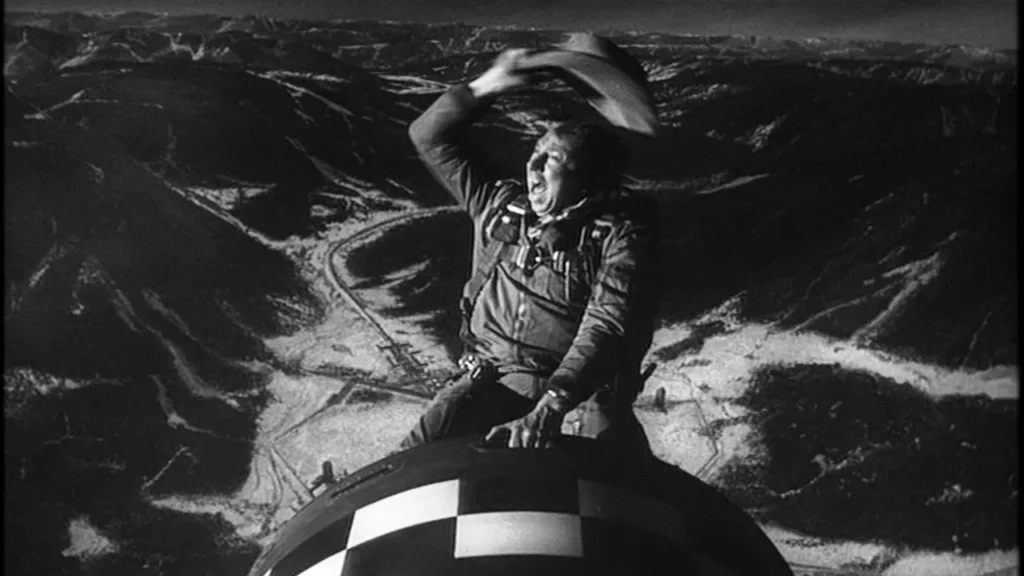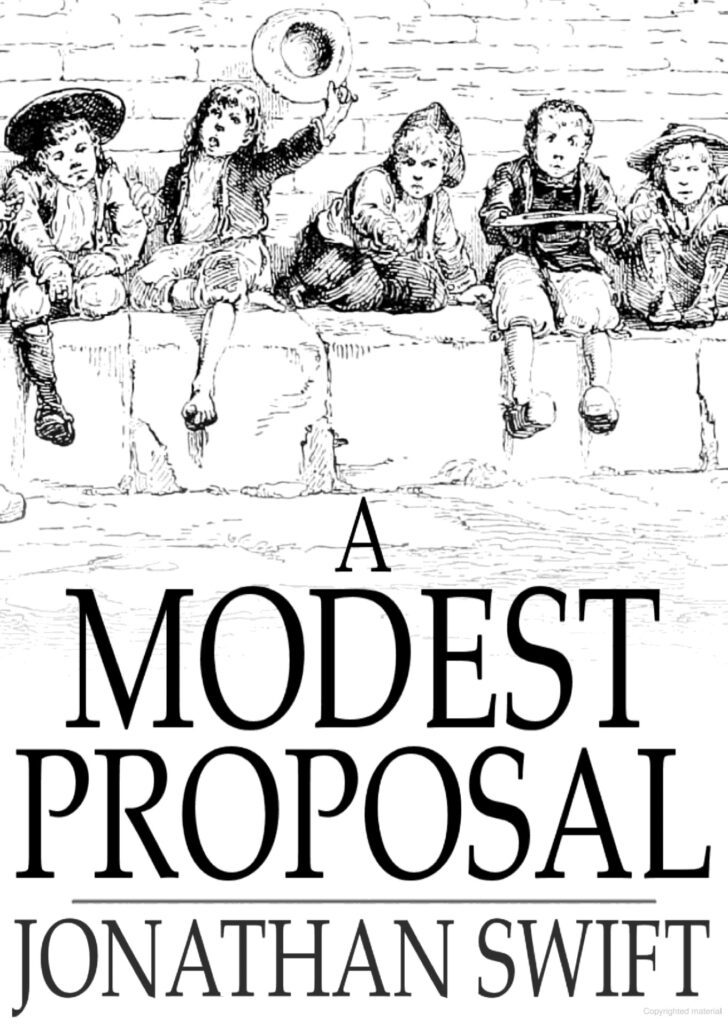What is Satire?
Satire is a genre of literature and performing arts, characterized by its use of humor, irony, exaggeration, or ridicule to expose and criticize people’s stupidity or vices, particularly in the context of contemporary politics and other topical issues. It’s a tool for offering commentary on and criticism of its subject. Satire is more than just making jokes or mocking societal elements. It’s a sophisticated form of critique that’s carefully dressed in humor, insight, and relevance.
Satire is Critical
Satire fundamentally aims to expose and critique the flaws, faults, and shortcomings of its subjects, which could range from individuals and organizations to broader societal norms. This critique often comes with an undercurrent of moral or social improvement. Satire is not just about pointing out what’s wrong; it’s about holding up a mirror to the subject, often in a way that motivates reflection and, ideally, change. It’s a form of social commentary that seeks to bring to light the underlying issues that might otherwise go unnoticed or unaddressed.
Satire is Humorous
While satire might not always provoke outright laughter, it uses humor to make its critique more palatable and engaging. Irony and exaggeration are the hallmarks of satirical humor. They serve to soften the blow of the critique, making the message more accessible and less confrontational. This subtle infusion of humor is what often allows satire to deliver its message effectively, making complex or sensitive issues more approachable.
Satire is Usually Insightful
It’s not just about highlighting problems but also about offering a deeper understanding of the issues at hand. Satire encourages the audience to think critically and look beyond the surface. It often provides a new perspective or sheds light on aspects of an issue that may not have been apparent before. This insightful nature of satire is what gives it depth, transforming it from mere comedy into a thought-provoking critique.
Satire is Often Timely
Satire is often at its most powerful when it is topical and relevant, focusing on current events, social trends, political happenings, and prominent figures. By engaging with contemporary issues, satire stays connected with its audience, offering commentary that is immediately recognizable and relatable. This relevance is crucial as it allows satire to comment on the pulse of society, reflecting and critiquing the world as it is at that moment. Topical satire can influence public opinion and contribute to the discourse on current issues, making it a dynamic and impactful form of expression.
What Satire Isn’t
Satire is often misunderstood, sometimes conflated with mere comedy or other forms of humorous expression. Understanding what satire isn’t is crucial for appreciating its unique character and purpose. Let’s demystify this by exploring common misconceptions about satire.
Satire Isn’t Merely Funny
While humor is a fundamental component of satire, it’s a mistake to equate satire with mere comedy. Comedy aims primarily to entertain and amuse, whereas satire uses humor as a means to an end – that end being critique and social commentary. Satire embeds its humor within a context of criticism; it’s not just about making people laugh, but making them think.
Satire is Not Always Negative or Desctructive
A common misconception is that satire exists solely to criticize or tear down its subjects. While critique is a key element of satire, it’s not just about highlighting the negative. Satire often has constructive goals – it aims to expose flaws and follies to prompt introspection, discussion, and even change. It’s not destruction for the sake of destruction, but rather, a tool for shedding light on issues with the hope of improvement.
Satire Isn’t Always Obvious
Satire is not always immediately obvious or overt. It can be subtle, requiring the audience to engage and recognize the layers of meaning beneath the surface. This subtlety is part of its effectiveness; it invites deeper reflection and analysis, allowing for a more nuanced understanding of the issues at hand. This complexity means that satire can sometimes go unrecognized or be misinterpreted by those not attuned to its subtleties.
Satire Isn’t the Same as Parody
While both satire and parody use humor, they serve different purposes. Parody primarily focuses on imitation and exaggeration of a particular work, style, or genre for comic effect. It doesn’t inherently carry a critical message about broader societal issues, which is a hallmark of satire. Satire, on the other hand, while it may use parody as a technique, always has a deeper, often critical, intent.
Satire is Much More Than Sarcasm
Sarcasm is often blunt and straightforward in its ridicule or irony, and can sometimes be mean-spirited. While sarcasm might be a component of satire, satire is much broader in scope. It encompasses a wider range of humor and irony, and unlike sarcasm, it is often less about personal ridicule and more about critiquing societal structures, behaviors, and norms.
How to Write Great Satire
Choose Your Target
Whether you’re poking fun at political ideologies, societal norms, cultural trends, or specific events or individuals, choosing your target is the first step in writing great satire. The key is clarity; your audience should easily be able discern what you’re satirizing. For instance, Jonathan Swift’s “A Modest Proposal” didn’t just criticize poverty in Ireland; it satirized the heartless attitudes of the wealthy towards the poor.
While ideologies, norms, and trends are common fodder for satire, the choice is vast and varied. The key is to find a subject that resonates with you and your intended audience. For example, in “Catch-22,” Joseph Heller chose to satirize the bureaucratic absurdities and paradoxes of war, targeting not just the concept of war itself but the illogical nature of bureaucracies in a high-stakes environment.
When selecting your target, it’s also crucial to consider its relevance and timeliness. Satire that connects with current events or enduring societal issues tends to have a stronger impact. The TV show “South Park,” for instance, has built its reputation on rapidly responding to current events, making its satire feel immediate and pertinent.
Another aspect to consider is the universality of your target. While it’s tempting to choose a niche subject, broader topics often have a wider appeal. This doesn’t mean you should shy away from specific targets, but rather, find ways to make them relatable to a larger audience. “Veep,” for example, while set in the specific world of American politics, uses universal themes of power, ambition, and human folly, making it accessible and amusing to a wide range of viewers.
Finally, approach your chosen target with a blend of critical insight and empathy. Satire is not just about mockery; it’s an opportunity to offer a deeper critique of a subject, potentially inciting thought and discussion. The British show “The Office” satirizes the mundanity and absurdities of everyday office life, but it does so with a sense of understanding and empathy for its characters, enriching the satire.
Find the Absurdity
The essence of satire lies in exaggeration. Identify the inherent absurdities within your subject and amplify them. Imagine satirizing a political policy about increased surveillance. You could depict a future where drones follow citizens to ensure they floss daily. The exaggeration here emphasizes the overreach of surveillance in a humorous, yet thought-provoking way.
In satire, exaggeration isn’t just a stylistic choice; it’s a tool to uncover and magnify the absurdities inherent in your subject. The goal is to transform what might be a subtle or overlooked flaw into something glaringly obvious and, ideally, laughable. This process of magnification not only entertains but also encourages your audience to reconsider the subject with a more critical eye.
To effectively find and amplify absurdity, start by observing the nuances of your target. Look for contradictions, hypocrisies, or simply the oddities that often go unnoticed. For instance, if you were satirizing the complexities of modern relationships, you might depict a scenario where a couple communicates solely through social media updates, despite living together. This exaggeration highlights the absurdity of over-reliance on digital communication in personal relationships.
Another approach is to push a logical premise to illogical extremes. Take the example of satirizing consumer culture. You could create a world where people take extreme measures, like trading essential life experiences or memories, just to purchase the latest trendy product. This not only lampoons consumerism but also subtly comments on what we value as a society.
Satire often thrives in the realm of the ‘slippery slope.’ Take a policy, trend, or behavior and ask, “What if this were taken to its extreme?” This method was famously employed in Aldous Huxley’s “Brave New World,” where the pursuit of happiness through technology and control is pushed to dystopian extremes, reflecting on the potential consequences of our own societal choices.
It’s important to balance your exaggeration so that the absurdity is evident but not so outlandish that it becomes unbelievable. The best satirical exaggerations are those that make the audience pause and think, “This is ridiculous, but it could happen,” or “This is an exaggeration, but it reflects a real issue.”
Use Irony and Contrast
Satire thrives on the disparity between reality and expectation. Irony is your ally. Illustrate the gap between how things are and how they ought to be, or between public perception and reality. Consider how George Orwell’s “Animal Farm” uses animals to depict the irony of a revolution that ends up mirroring the oppression it sought to overthrow.
Irony can be a subtle and effective way to highlight the ridiculousness of a situation. For example, satirizing the inefficiency of a bureaucratic system by portraying a department dedicated to reducing paperwork that, in fact, generates more paperwork. This ironic twist not only induces laughter but also underscores the problem in a memorable way.
One powerful form of irony is situational irony, where the outcome of a situation is the opposite of what you would expect. An example of this can be found in Jonathan Swift’s “A Modest Proposal.” Swift ironically suggests that the poor in Ireland sell their children as food to the rich. This shocking proposal starkly contrasts with the expected discourse on poverty, thereby highlighting the severity of the issue and the indifference of the elite.
Another way to utilize irony is through verbal irony, where what is said is the opposite of what is meant. This is often seen in satirical dialogues, where characters may speak in praise of something that the author intends to criticize. For example, in the television series “Veep,” characters often make grandiose statements about political integrity that are blatantly at odds with their actions, thus satirizing the duplicity often found in politics.
Contrast is equally important in satire. It can be used to juxtapose the ideal with the real, the powerful with the powerless, or the past with the present. This contrast can be seen in “The Great Gatsby” by F. Scott Fitzgerald, which uses the lavish lifestyle of the 1920s to contrast with the emptiness and moral decay of the characters’ lives, thereby critiquing the American Dream.
Another effective use of contrast is highlighting the difference between a character’s inner thoughts and outward actions. In “Dr. Strangelove,” the outward decorum and politeness of the military and political leaders starkly contrasts with the absurdity and horror of the nuclear war they are navigating, satirizing the cold war mentality and the absurdities of nuclear strategies.

The use of irony and contrast in satire is not just about creating humor; it’s about crafting a narrative that forces the audience to question and think critically about the subject at hand. By highlighting the discrepancies between reality and expectation, between what is said and what is meant, and by juxtaposing opposing ideas or values, satire can effectively critique and comment on the various facets of human society.
Balance Humor and Critique
Balancing humor and critique is the delicate tightrope walk at the heart of satire. The most impactful satirical works aren’t just amusing; they serve as a mirror, reflecting societal issues through the lens of humor. This balance is key in transforming satire from mere comedy to a potent form of social commentary.
Mark Twain, a maestro of this balance, wielded humor not as an end in itself but as a means to unveil deeper truths. In “The Adventures of Huckleberry Finn,” Twain uses the innocent perspective of a child to subtly critique the entrenched racism and moral hypocrisy of antebellum America. The humorous escapades of Huck and Jim on the Mississippi River are juxtaposed with the stark realities of slavery and societal prejudices, creating a narrative that is as thought-provoking as it is entertaining.
Another classic example is found in the works of British author Jonathan Swift. His essay “A Modest Proposal” is a masterclass in this balance. Swift uses dark humor, proposing that the poor sell their children as food to the rich, to deliver a scathing critique of the British exploitation of Ireland. The absurdity of the proposal, delivered with a straight face, heightens the underlying critique of societal indifference to the plight of the impoverished.

Jane Austen also excelled in this balance through her use of wit and irony to critique the social norms of her time. In “Pride and Prejudice,” Austen uses the character of Elizabeth Bennet and her sharp wit to both entertain and to subtly question the societal expectations placed on women, particularly regarding marriage and social status.
In modern times, television shows like “The Office” have continued this tradition. The show uses situational and character-driven humor to critique modern office culture, corporate management, and human relationships. The seemingly mundane setting of an office is transformed into a canvas for a humorous yet insightful commentary on the absurdities of everyday work life.
The key to achieving this balance lies in the subtlety of the critique. The humor should not overshadow the commentary; instead, it should be used to enhance it. This is achieved through careful crafting of characters, situations, and dialogues that are amusing on the surface but carry a deeper, often critical, meaning.
Be Subtle
Great satire thrives on subtlety. It’s akin to a cleverly laid trap; the audience stumbles into realizations, rather than being directly confronted with them. This art of being implicit in your criticism is what separates good satire from mere parody or slapstick humor.

In “Parks and Recreation,” the character of Ron Swanson exemplifies a different approach to subtlety in satire. Swanson’s extreme libertarian views and his comical disdain for government, despite being a government employee, offer a nuanced critique of political ideologies and bureaucratic inefficiencies. The show refrains from directly mocking or condemning these views. Instead, it cleverly exaggerates them within a relatable and humorous framework. This leads viewers to reflect on and find humor in the paradoxes and contradictions inherent in real-world politics and government operations.
Similarly, consider the classic British sitcom “Yes, Minister.” The show never explicitly states its critique of bureaucratic inefficiency and political maneuvering. Instead, it uses the interactions and situations its characters find themselves in to highlight these issues. The audience is left to connect the dots, enjoying a laugh while simultaneously pondering the complexities of government and politics.
Subtlety in satire also involves using metaphors and allegories. Franz Kafka’s “The Metamorphosis,” while not traditionally satirical, uses the absurd situation of a man turning into an insect to subtly comment on alienation, dehumanization, and the absurdity of modern life. The reader is drawn into a bizarre narrative, only to slowly realize the underlying commentary on society.
The effectiveness of subtlety in satire is also about timing and pacing. The humor and critique should unfold at a pace that allows the audience to engage and reflect. It’s about dropping hints, not revealing the entire joke or critique upfront. The reveal, when it comes, should feel like a discovery to the audience, a reward for their engagement and understanding.
In crafting subtle satire, it’s important to maintain a balance. Too obscure, and the satire loses its impact; too obvious, and it becomes preachy. The goal is to encourage the audience to think critically, to question and to see the deeper meaning behind the humor.
Know Your Audience
The success of a satirical piece often hinges on how well the creator knows the beliefs, values, and sensitivities of their audience. Misjudging the audience can result in satire that is either too obtuse or too offensive, ultimately causing the piece to miss its mark.
One of the pitfalls of not understanding your audience is creating satire that is too esoteric. If the references, language, or the context of the satire are not accessible to the intended audience, it can lead to confusion rather than amusement or enlightenment. For instance, a satirical piece heavy with obscure literary references might resonate with an academic audience but could be lost on a general readership. This disconnect can make the satire seem aloof and unengaging.
On the other end of the spectrum, satire that is too blunt or heavy-handed can alienate the audience, especially if it crosses the line into insensitivity or offensiveness. For example, a satirical piece that makes light of a sensitive or traumatic event without considering the potential impact on those directly affected might evoke anger and backlash rather than prompting reflection or debate.
Stay Relevant: The Impact of Timeliness in Satire
Satirical works that tap into current events, social trends, and political happenings tend to resonate more deeply with audiences. This relevance not only enhances the humor but also sharpens the critique, making it a powerful tool for commentary on contemporary issues.
“Saturday Night Live” (SNL) exemplifies the effective use of current events in satire. The show’s sketches often reflect and comment on the latest political developments, pop culture phenomena, and societal trends. For instance, SNL’s political parodies, which have featured impressions of various U.S. presidents and political figures, capture not just their mannerisms but also the essence of the political climate. This timely reflection ensures that the satire is not just funny, but also poignant and thought-provoking.
Websites like “The Onion” and “The Babylon Bee” have taken the art of satirical news to a new level. These platforms publish articles that mimic the style and appearance of traditional news but with a satirical twist. They cover a wide range of topics from politics to culture, often commenting on recent news and events. For example, “The Onion” might publish a piece with a headline that’s a hyperbolic take on a current political issue, offering a humorous yet incisive critique of the situation. “The Babylon Bee” similarly uses satire, often with a more conservative slant, to comment on cultural and political issues, highlighting the absurdities in recent events.
Social media has become a fertile ground for satirical content. Memes, tweets, and short videos that satirize current events can go viral, spreading rapidly across social platforms. Yes, a meme can certainly be considered satirical. Satire often thrives on brevity and impact, qualities inherent in memes. These snippets can quickly and effectively convey commentary through a blend of images and text. This immediacy allows satirists to react quickly to events as they unfold, engaging with a broad audience in real-time. The speed and reach of social media have made it an invaluable tool for satirical commentary, enabling satirists to stay highly relevant and topical.
Writing satire is a delicate art that balances humor with critique, subtlety with clarity, and relevance with creativity. By choosing a clear target, finding the absurdity in the subject, using irony, maintaining a balance between humor and critique, being subtle, knowing your audience, and staying informed, your satirical piece – be it an article, script, story, poem, or song – can not only entertain but also offer insightful commentary.
Use AI for a Shortcut to Satire
Artificial Intelligence can write just about anything, and satire is no exception. We at Word.Studio have built a fun tool to help you quickly generate a nice blend of humor and commentary on the fly. If you would like to experiment with generating original satirical articles, try our Satirical Article Generator to draft a satirical article on just about any subject you can imagine. This is an emerging field, and AI doesn’t always excel at the nuance of humor and subtlety, but it certainly tries. You are welcome to take it for a spin to see for yourself here.









